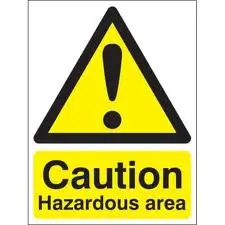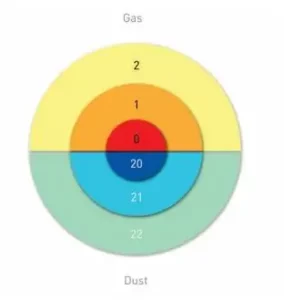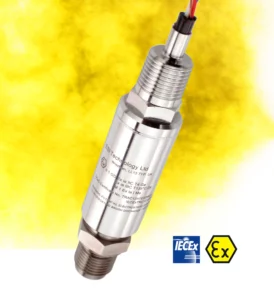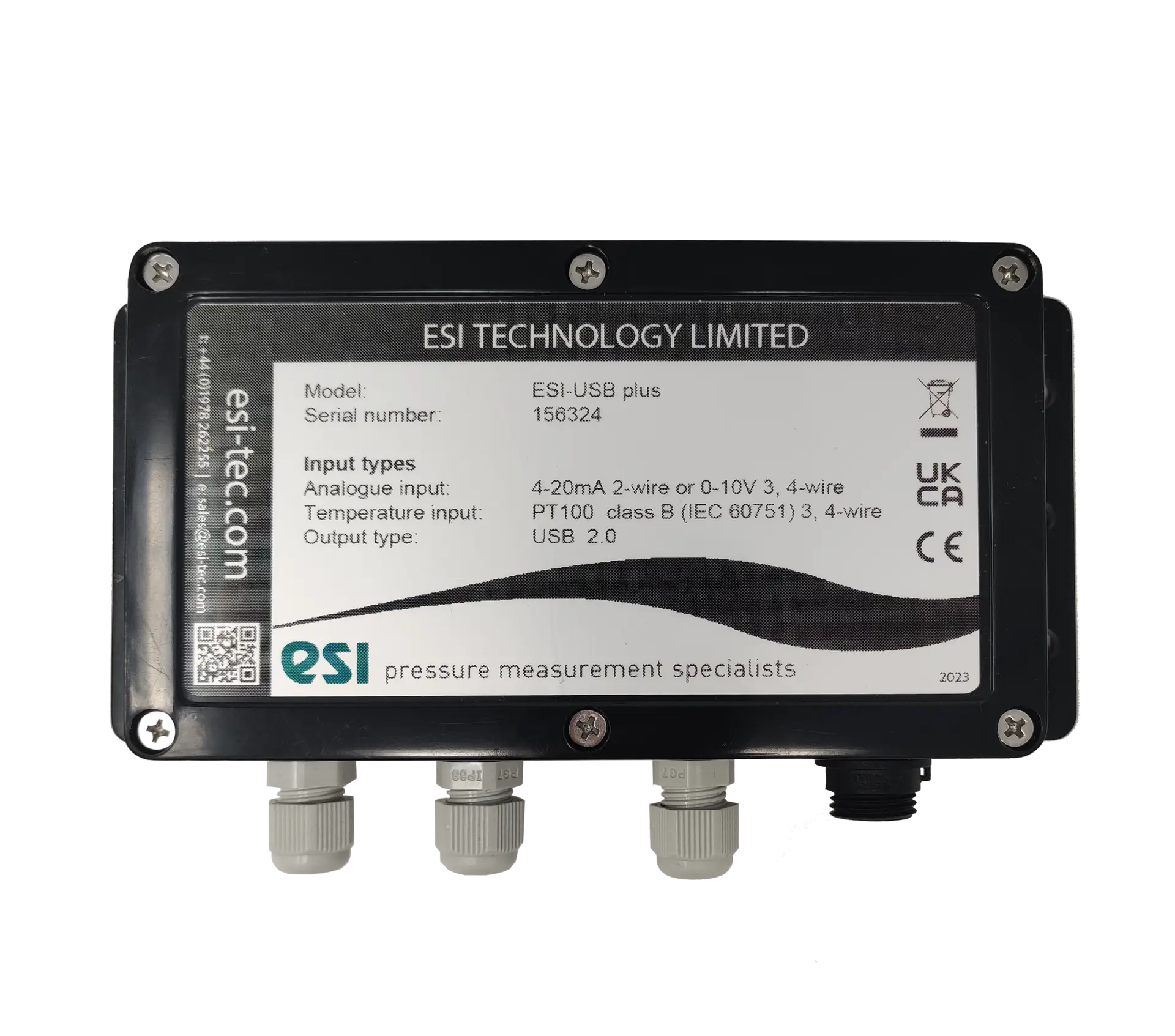Our Unit Converter
The ESI Unit converter allows you to quickly and easily access a conversion tool to work out your preferred unit of pressure measurement wherever you may be. Whether out on-site or in the office.

Download the ESI-USB© Software
The ESI-USB© software allows you to connect your ESI transducer to your laptop or PC and be up and running monitoring pressure data within ten minutes. The software auto-updates and is compatible with Windows 8, 10 & 11.
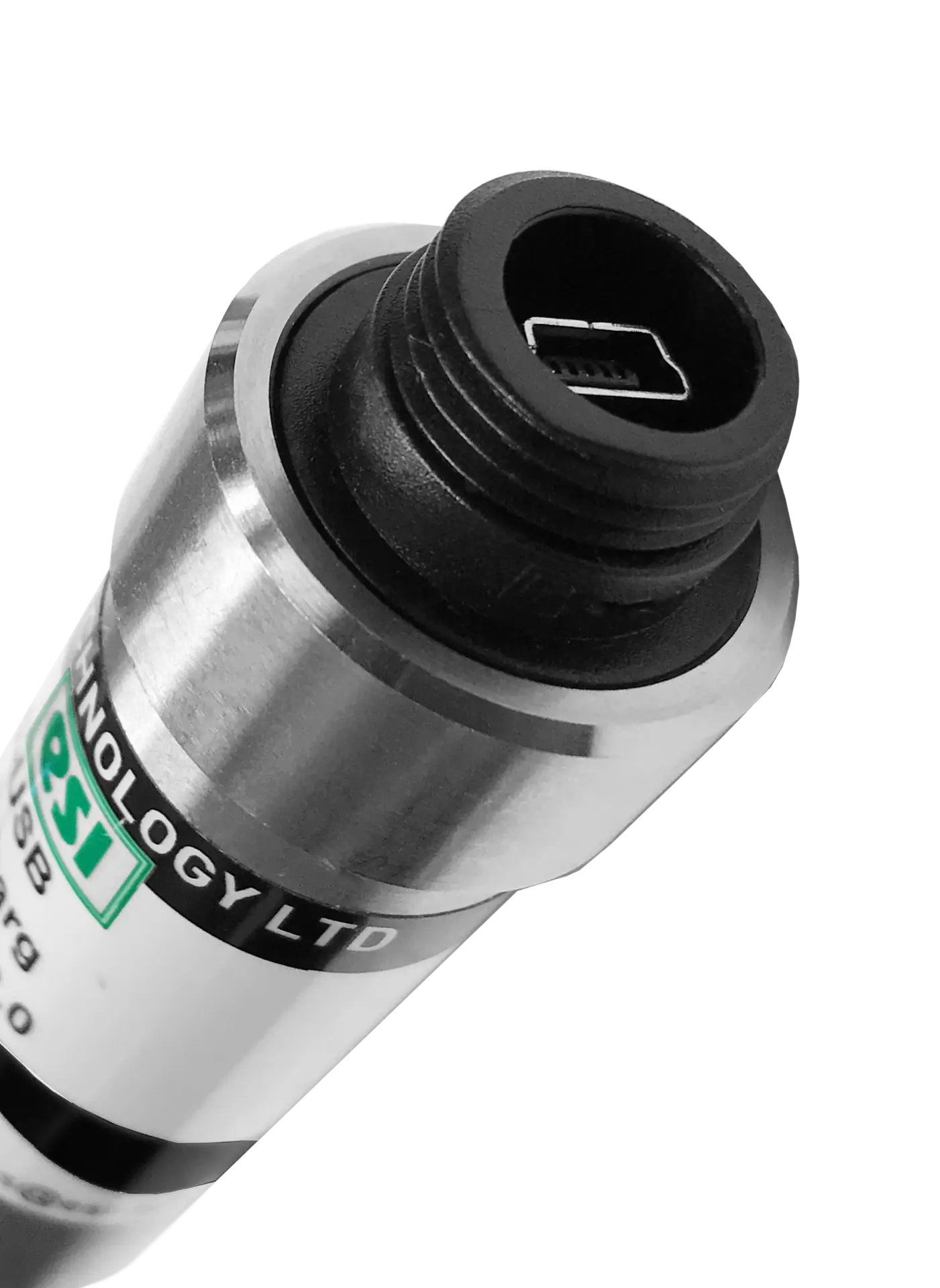

Intrinsically Safe or Explosion Proof?
Hazardous Zones
First you need to understand hazardous locations. Explosive atmospheres can be caused by flammable gases, mists, vapours or combustible dusts. If there is enough of the substance mixed with the air, even the smallest of sparks could cause an explosion. The ATEX directive categorises hazardous areas like this:
Hazard – Gas / vapour / mist
Zone 0 – A place in which an explosive atmosphere consisting of a mixture with air of dangerous substances in the form of gas, vapour or mist is present continuously or for long periods or frequently
Zone 1 – A place in which an explosive atmosphere consisting of a mixture with air of dangerous substances in the form of gas, vapour or mist is likely to occur in normal operation occasionally.
Zone 2 – A place in which an explosive atmosphere consisting of a mixture with air of dangerous substances in the form of gas, vapour or mist is not likely to occur in normal operation but, if it does occur, will persist for a short period only.
Hazard – Powder / dust
Zone 20 – A place in which an explosive atmosphere in the form of a cloud of combustible dust in air is present continuously, or for long periods or frequently.
Zone 21 – A place in which an explosive atmosphere in the form of a cloud of combustible dust in air is likely to occur in normal operation occasionally.
Zone 22 – A place in which an explosive atmosphere in the form of a cloud of combustible dust in air is not likely to occur in normal operation but, if it does occur, will persist for a short period only.
Many environments require intrinsic safety, but many transmitters may only be classed as explosion or flame proof or similar. The ATEX categories are;
- i intrinsic safety (Limitation of electrical ignition energy by limiting current and voltage)
- ia or iaD for Zone 0 or Zone 20
- ib or ibD for Zone 1 or Zone 21
- ic for Zone 2
- d flameproof / explosion proof enclosure, suitable for zone 1/21 and 2/22
- n non-incendive, suitable for zone 2/22
- m encapsulation suitable for zone 1/21 and 2/22
There are many methods of protection that can be used to make a pressure transmitter safe in a hazardous area. Most will allow the sensor to be installed in areas classified as Zone 1 or 2. However, only intrinsically safe (ia) and encapsulated devices (m) can be used in Zone 0 locations.
At ESI we manufacture intrinsically safe pressure transmitters that are ATEX and IECEx certified. We are often asked for Explosion proof transmitters, but what are the differences?
The first and most notable difference is how the transmitters are built. An Ex-d pressure transmitter must have a flameproof or explosion-proof enclosure. This means that the transmitter’s electronic components should be mounted inside a housing which is designed to contain the flame, should it explode or catch fire. This method is used where it is impossible to reduce the electrical circuit energy by means of an isolated barrier for example.
Intrinsically Safe (IS) describes a sensor that is designed and wired to work on such a low current and voltage that it cannot possibly ignite flammable material. Used together with an intrinsically safe isolated barrier, the transmitter can operate safely even in the most hazardous areas.
Wiring for hazardous areas
Explosion proof wiring is much more expensive than intrinsically safe wiring because it requires explosion proof conduit and seals to isolate the circuit from hazardous gases. The seals prevent the hazardous media from flowing into the conduit. If the circuit were to ignite any hazardous dusts or gases that made their way into the explosion proof wiring, the housing and conduit are capable of containing the explosion. Any escaping hot gases would be cooled enough so that they would not be able to ignite any of the hazardous media outside of the explosion proof conduit or fixtures.
Intrinsically safe wiring does not require the conduit and seals, but you will need an intrinsically safe barrier. This device is wired between the sensor and the power source. It controls the amount of energy that the power source sends to the sensor transmitter.
Still unsure? We’re happy to help you select the best pressure transmitter for your hazardous application. Contact sales; +44 (0)1978 262255, [email protected] or www.esi-tec.com
